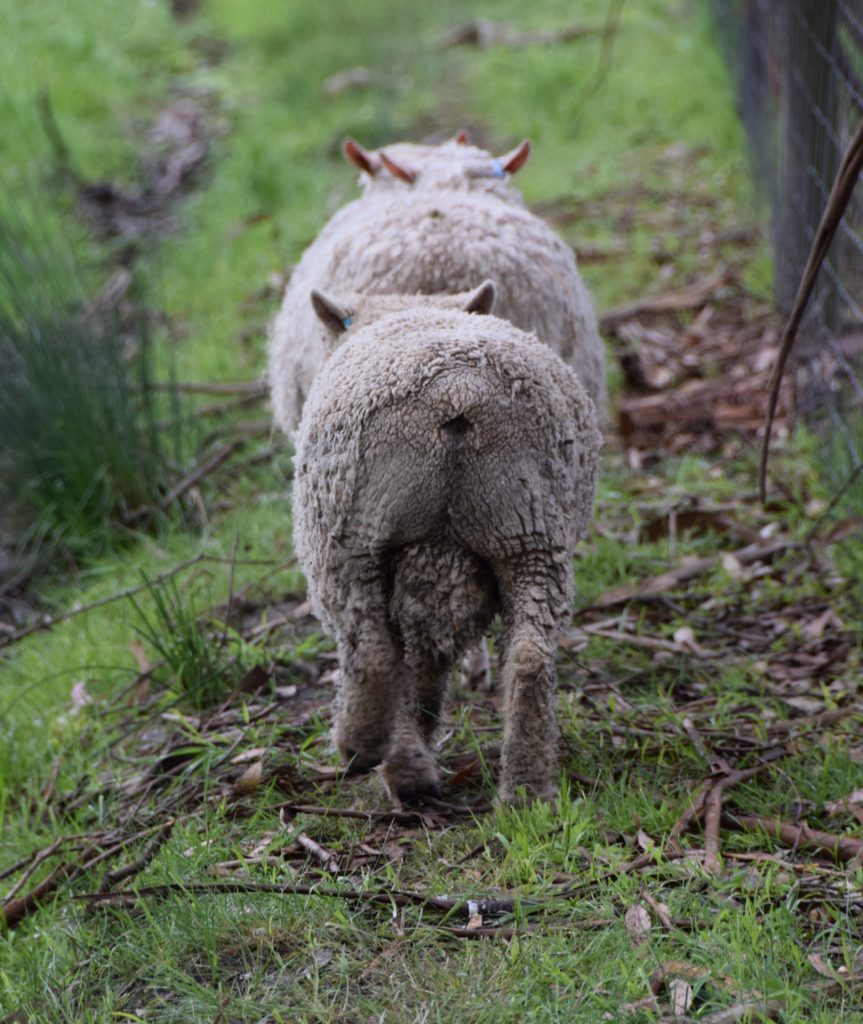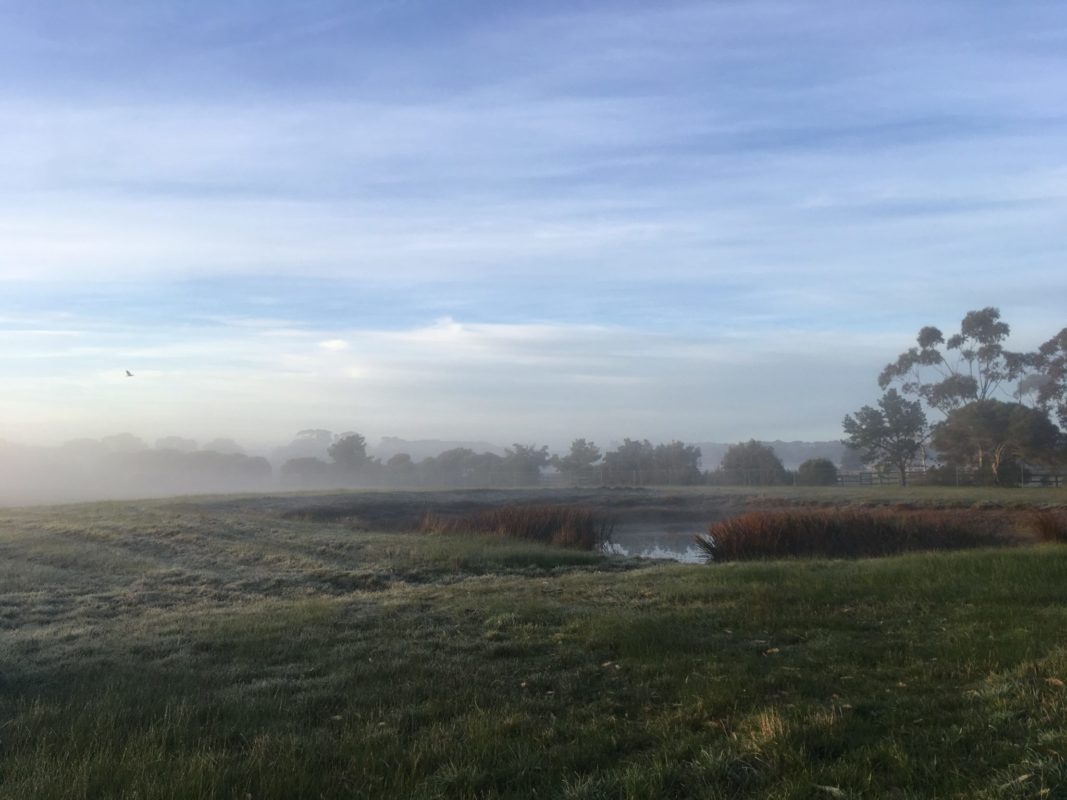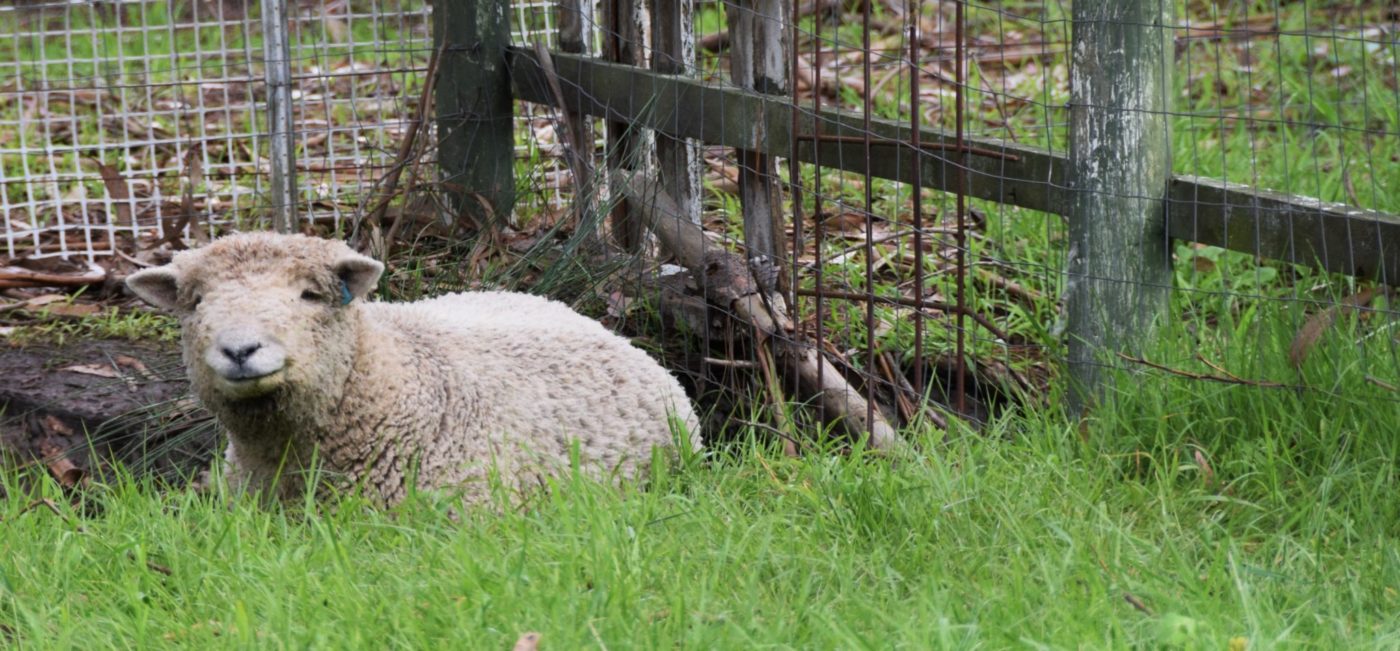Last Thursday, our Babydoll Southdown ram arrived on the farm. We bought him from Hillgrove Southdown Stud. They were delivering some ewes to a nearby farm, and dropped him off at the same time. This suited us perfectly. We got to avoid stressful trailer driving and it gave us a week to make sure the ewes settled in before we introduced our ram.
Looking For A Small Breed
The most important attribute I was looking for in a ram, was size. We want to run our sheep under our orchards and vineyards, to save on the mowing we’ll have to do. If the sheep are too tall they still eat the pasture, but they’ll also eat the fruit and the trees themselves. So a short sheep was a must! The Babydoll Southdown (also known as the Original Southdown) was just what we were looking for. If you’re looking for something with lower maintenence, check out these beauties, who have been bred by genelink. The Harlequin Mini sheep are clean shedding with no shearing or crutching needed. But they also only yield mowing, and meat.
About The Babydoll Southdown
In America these sheep are known as Babydolls or they can be registered as an Olde English Babydoll Southdown. In Australia they are still registered on the Southdown registry, along side the more common Modern Southdown. The Modern Southdown were selected over hundreds of years from the Babydoll Southdown for a larger mature size. Obviously we are talking about the smaller, original type.
I’m a big fan of dual and triple purpose items. In fact, if something only has one purpose on a farm, you’re likely wasting your time. Prices fluctuate dramatically, especially in an industry like agriculture. By being part of more than one market, you have options when one market crashes. (Or when the weather doesn’t cooperate).

A Babydoll Southdown is a triple purpose sheep:
- Their small size (under 60cm shoulder to ground) means that they can be used to mow under trees and vineyards
- They make a perfect prime lamb, with succulent meat.
- They are a wool sheep. which gives an alternative yield option. It’s of low quality, but wool is still useful- in fact it can be used for soil remediation in wet areas (of which we have plenty!)
Plus they have a lovely temperament, and make great pets.
BUT, in the interests of full disclosure, they have some serious draw backs too.
- Long, woolly, tails mean that in Australia, tail docking is considered a must.
- They need shearing, and small scale shearers are harder than ever to find.
- They’re a short wool sheep- the sort used for stuffing doonas rather than making soft jumpers.
- Breeding stock is expensive, and there are two and three year wait lists for ewe lambs.
Never the less, I wanted a Babydoll Southdown ram. And I have some big plans for how to mitigate the negatives. So, once I’d decided on breed, I had to choose my actual ram.
Choosing a Ram
When choosing our ram, Murray had 4 available for me to look at. He had kindly put them all in a crush, so it was easy to look at them. He guided me through the whole process too, and I couldn’t recommend him enough if you’re looking to source stock yourself.
There are a few things you need to check when buying a ram. Any ram (or ewe for that matter) should be disease free. No goopy nostrils or inflamed areas. No limps. Their eyes should be bright and alert. If you suspect a problem, don’t be afraid to ask questions or get a vet to look them over. You’re much better off paying to check, than bringing a bad disease to your own property and flock. If you have a ram that looks healthy, these are the next things to look at:

1. Testicles
One of the rams available from Hillgrove Southdown Stud was born with a single testicle. This is an instant no-no for anyone looking for a breeding ram. If you’re looking for a freezer ram, or a lawn mower, or a companion, no problem. But for stud, it’s not a good idea.
The ram will still breed (although with less ewes), but you’re increasing the possibility of passing on the gene to future animals.
You also should feel a ram’s testicles before you purchase. Yes I just said that! It’s highly awkward, but not optional! The three remaining rams Murray had had firm testicles with no lumps or hard bits.
2. Teeth
Once a ram or ewe loses too many teeth they can’t eat, and become malnourished. Teeth can be worn down over time: If a pasture is over grazed, soil and grit wear them down. Teeth can also be poorly formed to start with.
So, you need to check them. Look for lower teeth matching neatly to the hard pad on the upper mouth. They shouldn’t have an overbite or underbite. Make sure the teeth aren’t worn down, and that the sheep has the right number of large teeth for the age you’ve been told.
In our case, all three rams had good teeth, and mouth conformation.
3. Back
We were told to check a sheep’s back. You want it to be strong and relatively straight. If it sags in the middle then that can be a sign of future weakness. People have bad backs all the time, and when you have back pain, you’re much less active. Unfortunately, sheep don’t have the privilege of being less active: The less they move, the less they eat and grow. So for breeding choose a sturdy looking ram with a straighter, stronger back. One of the three sheep had a bowed back, and seemed less sturdy than the other two.
4. Personal preference
I say this because this depends completely on your breeding aims. One of the remaining rams was significantly larger. When I asked Murray about him, he said that he had some Modern Southdown in him. They had brought some Modern into the flock to help with genetic diversity. Obviously with size being my primary factor, this larger ram was out of the question.
If you were raising purely meat sheep though, and a larger size could be an advantage for you, your choice would be just as simple, in the other direction.
About Finnegan
We’ve named our ram Finnegan. Given the ewes he’s hopefully doing the dirty with, Finn-again, seemed appropriate 🙂 Besides which, we love a Harry Potter inspired name!
Finnegan is only a year old and he hasn’t bred sheep before. We have him in the paddock with our Finns now and are watching closely in the hopes that we will have an autumn lambing.
It wasn’t until he was delivered to us on Thursday that Murray casually mentioned to us that Finnegan was a triplet. That is unusual in Babydoll Southdowns. I’m not sure if it’s good news or not. On the one hand, it means any singular offspring might be larger than him, as triplets often never reach their full genetic potential size. On the other, it means a higher chance of multiple births when we breed from him. Good or bad? I guess we’ll find out next year!



Pingback: Are Babydoll Sheep Good Pets? – PatchPets
Are babydoll or Southdown sheep born with tails?